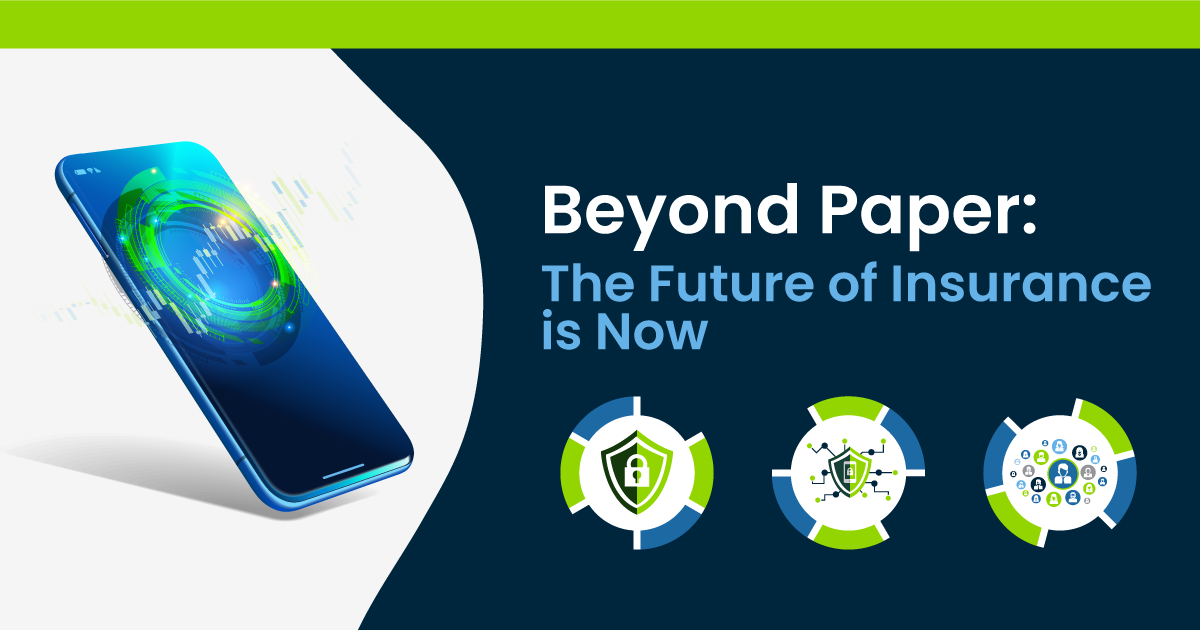
Beyond Paper: The Future of Insurance Is Now
In 2021, Farmers Insurance deployed a digitally controlled field robot with the ability to navigate rough terrain considered unsafe or inaccessible. ‘Rosy’ will be able to not only help with inspections after a natural catastrophe but will also be able to assist first responders during search and rescue operations. Technology is transforming the world. In most areas, change is happening fast. The insurance industry is changing fast, too, with one key exception: claim payments. The future of insurance is now, and it’s time to modernize payments.
Expectations Have Changed
When you buy coffee, do you write a check? What about when you buy groceries, go to a restaurant or pay for movie tickets? The odds are high that you don’t use a check in any of these situations.
There’s a chance you haven’t written a check in months, maybe even years. In fact, some people have never written a check.
According to research from the Federal Reserve Bank of Boston, check use has been declining since 2000. Consumers used checks for only 5% of all transactions in 20181.
That might sound like a significant portion of transactions, but it’s important to keep in mind that some users, including older consumers, are more likely to use checks, and this can skew results. Additionally, some people might use checks because they have to, not because they want to. The proportion of consumers who state they actually prefer checks dropped by 23% for bills and 8% for other purchases between 2015 and 20182.
Preferences and expectations are changing. Now that people have access to faster forms of payment, they’re losing interest in using checks. This is true when it comes to writing checks. It’s also true when it comes to receiving checks from others. Many people prefer to get their paychecks via direct deposit and to have people send them money via an app.
Unfortunately, the insurance industry has been slow to catch on.
The Insurance Industry Is Transforming, Too
The insurance industry may be slow to embrace certain types of change, but it’s not immune to progress.
For example, let’s say a policyholder reports a claim involving a damaged roof. The insurer needs to inspect the damage, but it’s difficult and potentially dangerous for an inspector to reach. Instead, the insurer can just use a drone – and that’s just one possible application of drones. Deloitte3 says insurers are using drones to monitor natural disasters, assess risks, adjudicate claims and prevent fraud.
Drone footage can be helpful, but sometimes there might be a need for more detailed, realistic images. Enter 3D modeling. Propmodo4 says that insurers are using 3D images to assess damage and even identify possible risks.
Insurers are also using predictive analytics to improve underwriting, telematics to improve pricing, artificial intelligence to improve claims handling, machine learning to improve fraud prevention and apps to improve communication.
So, what about payments? Yes, many insurers now accept digital premium payments, but some are still lagging behind when it comes to claim payments. Technology is improving nearly every aspect of the insurance process. Surely, it’s time to improve claim and commission payouts, too.
The Technology Is Here
If you’re waiting for better technology to emerge, there’s good news. The wait is over. The technology needed to enable fast, secure claim payouts and commission payments already exists.
Consumers are increasingly eager for digital payments, and the pandemic has fueled this trend. When people need funds, they need the funds fast. They don’t want to have to wait around for paper check processing and mail delivery.
Some companies are catching on, and they’re reaping the benefits. A PYMNTS study5 found that 68% of companies say digital payment innovations have improved operational efficiency, and 40% say these innovations have improved customer satisfaction.
Some insurers are starting to catch on, too, at least in Europe. According to another PYMNTS study6, nearly 90% of European insurance companies have adopted digitization initiatives designed to enhance the customer experience for digital-first consumers, and 34% are interested in boosting digital payment capabilities.
Embrace the Future of Insurance
Most insurers have accepted that digital transformation is happening, it’s happening now, and it’s happening fast. There’s no reason to lag behind when it comes to digital payments. The technology is ready, and it’s easy to implement.
Stop underwhelming your customers and agents with paper checks. It’s time to modernize payments and move beyond paper. One Inc can help. Contact us to learn more.
Sources:
- https://www.bostonfed.org/publications/research-department-working-paper/2021/payments-evolution-from-paper-to-electronic-bill-payments-and-purchases.aspx
- https://www.atlantafed.org/-/media/documents/banking/consumer-payments/research-data-reports/2020/02/13/us-consumers-use-of-personal-checks-evidence-from-a-diary-survey/rdr2001.pdf
- https://www2.deloitte.com/us/en/pages/financial-services/articles/infocus-drone-use-by-insurance-industry-flying-higher-farther.html
- https://www.propmodo.com/3d-images-are-becoming-an-integral-part-of-the-insurance-claims-process/
- https://www.pymnts.com/news/payments-innovation/2022/40-pct-of-middle-market-firms-say-digital-payments-innovations-have-improved-customer-satisfaction/
- https://www.pymnts.com/insurance/2022/demand-for-faster-payouts-drives-digitization-in-europes-insurance-space/
Tags: Claims, Digital Payments

Written by The One Inc Content Team
The One Inc Content Team strives to provide valuable insights about digital trends and payments innovation for the insurance community.
Want to read more articles like this?

